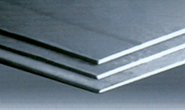Prices

March 2, 2021
SMU Explains: What is a Scrap Collar?
Written by Michael Cowden
SSAB Americas raised some eyebrows in the steel market when it officially announced a “scrap collar” along with an $80-per-ton ($4/cwt) plate price increase earlier this week.
The move, while not unheard of in the steel market, is not necessarily typical for standard spot market plate orders, some buyer sources said.
An SSAB Americas spokeswoman could not immediately confirm when the company last implemented a scrap collar or why it was doing so now.![]()
Mills tend to implement scrap collars when lead times are extended. And lead times at North American plate mills are as far out as May-July in some cases, market participants said.
“When they (mills) ask for quotes beyond where they are comfortable, then they use a scrap collar so that both parties are protected,” one manufacturer source said.
A mill taking orders now for June delivery, for example, is exposed to increased risk should scrap prices rise over the next few scraps settlements just as a buyer is exposed should scrap prices fall, sources said.
A scrap collar works like this: Let’s say a buyer and a steel mill have agreed to a plate price of $1,000 per ton, and the scrap collar is set at $400-500 per ton. If scrap stays within that range, the price a buyer has agreed to pay a mill remains unchanged.
If scrap goes higher than that range, then the buyer pays every dollar the scrap price exceeds the collar. If scrap rose to $550 per ton, then the plate price would increase to $1,050 per ton instead of the $1,000 per ton as initially agreed.
On the contrary, if scrap were to fall below the bottom limit of the collar, then the buyer would receive a dollar-for-dollar deduction. In other words, if scrap fell to $350 per ton, then the fob mill plate price would drop from $1,000 per ton to $950 per ton.
And while some sources continue to think, as they have for several months, that steel prices have peaked, others contend that steel prices still have room to rise, particularly on the plate side.
The reason plate might be even less likely to dip: U.S. mills are still trying to get plate prices on par with those for hot-rolled coil. Plate typically carries a premium to sheet. But that has not been the case since sheet prices started their meteoric rise last fall.
“Plate is going to be as tight or tighter than HRC going forward. It is not going to be pretty when we hit April through June. Scrap will send pricing up again next month,” one service center predicted.
Prices for both sheet and plate are up. But plate prices remain below coil prices despite a recent round of mill price hikes.
Steel Market Update’s average plate price stands at $1,095 per ton ($54.75/cwt), up $25 per ton from $1,070 per ton a week ago. SMU’s average hot-rolled coil is at $1,240 per ton, up $30 per ton from $1,210 per ton last week.
The result: Hot-rolled coil carries a $145 per ton premium to plate, the reverse of what might be the case in a normal market.
By Michael Cowden, Michael@SteelMarketUpdate.com







